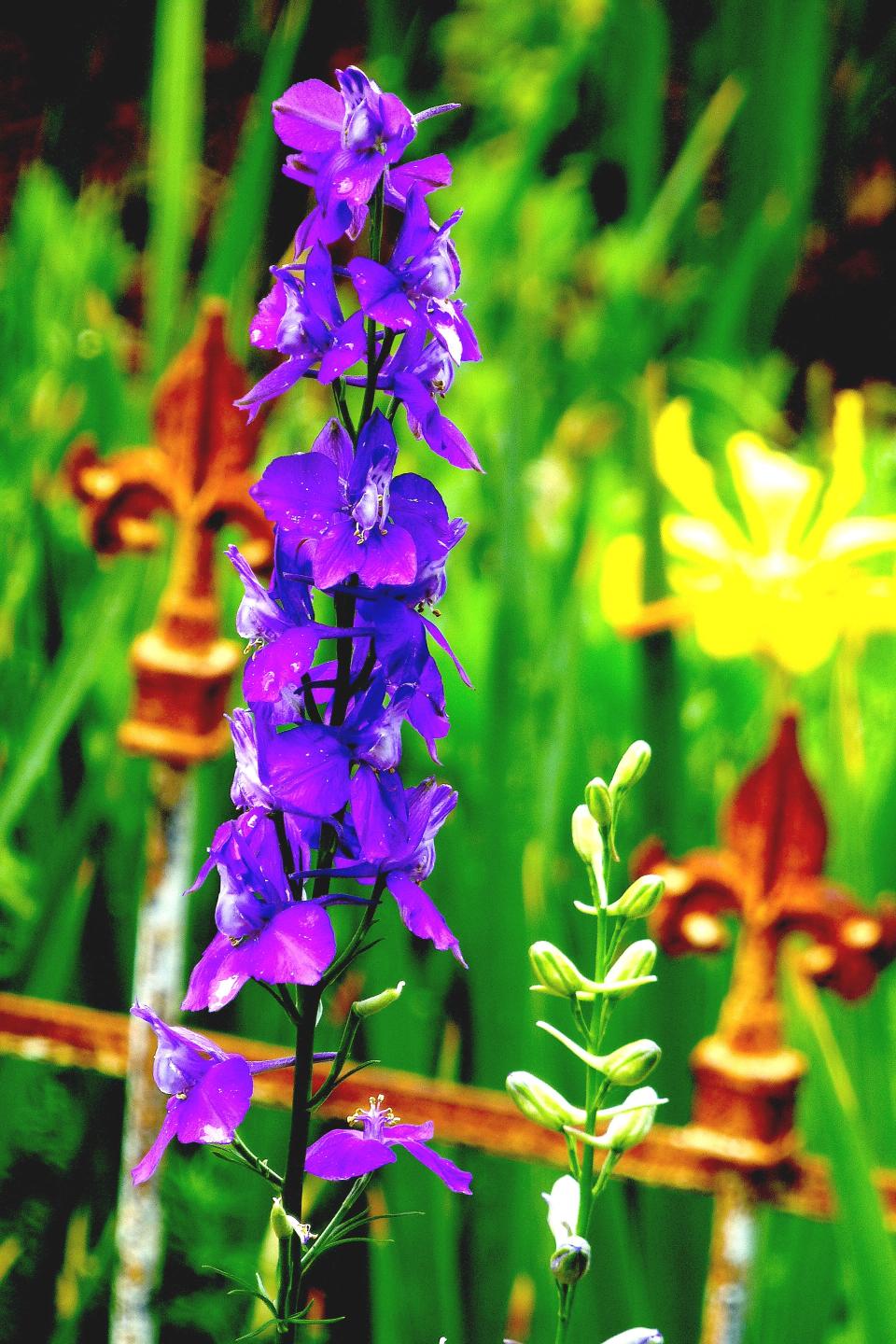Gardening for You: Living memories with larkspurs
We soon pause to observe Memorial Day, the day set aside for Americans to honor those who died while serving in the United States military. All gratitude and immense debt is owed to those who died that we may live in freedom in America.
American flags and flowers will fittingly blanket their graves Monday, May 29. Larkspurs may be some of those flowers that grace military graves.

Garden larkspurs stir up patriotic emotions as they bloom in late May with deep, almost blue, tall blooms. The larkspur is an annual flower that comes back year after year, just like passionate memories that flood our thoughts of loved ones who served our country.
Larkspurs are brilliant additions to the spring garden. They are one of the first flowers to bloom in the spring, are one of the easiest flowers to cultivate, take almost no effort in the garden, and have a bloom time that spans the month of May. Larkspurs self-seed profusely and because they readily intercross subsequent generations display blooms in shades of deep purple, lilac, pink, and stark white.
The larkspur flower is botanically a spire, sometimes, but incorrectly, referred to as a spike. A spike has many florets borne on a single stem, as does as spire, but florets of a spike are sessile, attached directly to the floral stalk. As can be seen in the accompanying photo, individual florets of the larkspur inflorescence are attached to the floral stalk by thin floral "stems".
Understanding the botanic use of the word spire may be amplified by the architectural design of a spire --- a tall, pointed structure on the summit of a church steeple or roof of a building. The botanic spire of the larkspur is a tall, slender inflorescence on the summit of the green plant.

Individual florets of the spire have five fused petal-like sepals shaped like a spur, thus the name larkspur. Brightly colored florets can be borne in dense columns or open spires. Each floret has a central pistil surrounded by a whorl of 13 stamens topped with anthers, plump with yellow pollen.
Larkspurs have a definite role in ornamental spring gardens but cultivate them separate from edible crops as all parts of the plant and flower are toxic to humans and animals. Never ingest any part of a larkspur.
Alkaloids are the toxic chemicals of larkspurs, highest in new growth and the tiny, black seeds. Consuming the alkaloids results in neuro-muscular paralysis, leading to respiratory failure, often death. Signs of poisoning include rapid, irregular pulse, nausea and vomiting, muscular twitching (ars.usda.gov). Call poison control at (800) 222-1222 if poisoning is suspected.
Ending on a positive note, in the language of flowers larkspur symbolizes love, joy, affection, and strong attachment. Such emotions are especially appropriate as we remember our military and their sacrifices for us. Never forget what they have done, who they were, and give them due honor on Memorial Day.
Ellen Peffley taught horticulture at the college level for 28 years, 25 of those at Texas Tech, during which time she developed two onion varieties. She is now the sole proprietor of From the Garden, a market garden farmette. You can email her at gardens@suddenlink.net
This article originally appeared on Lubbock Avalanche-Journal: Gardening for You: Living memories with larkspurs

